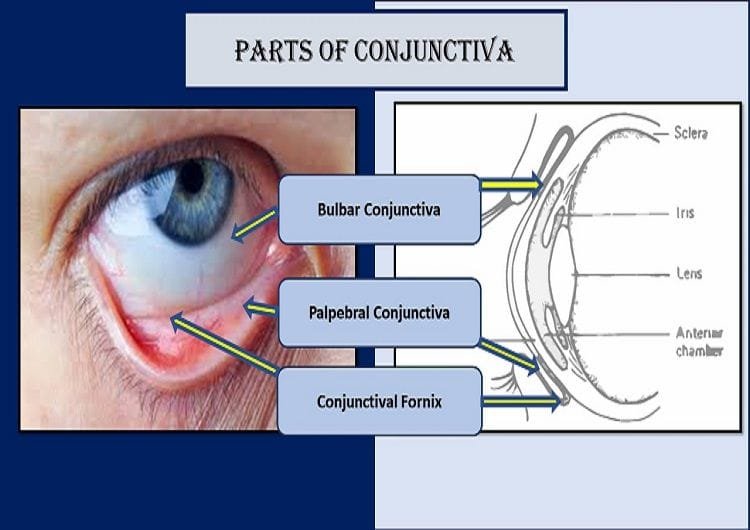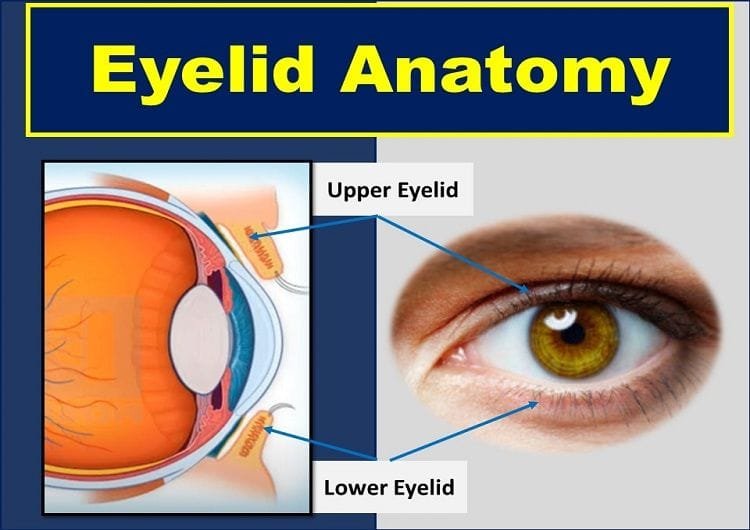All about Myopia or Nearsightedness: Definition, Prevalence, Causes, Symptoms, Risk Factors, and Treatment.
Do you feel difficulty seeing distant objects, like a television screen, or highway signals, but have a clear vision for near work, like reading, and viewing computer screens? Well, you may be myopic or nearsighted. Today, we will discuss the most common refractive error called myopia or nearsightedness, including its prevalence, causes, symptoms, and treatment options.

Definition of Myopia
Also known as nearsightedness, myopia is a refractive state of the eye in which a person can see close objects clearly, but have difficulty clearly seeing distant objects like the whiteboard in school or while driving. Myopia is the most common cause of impaired vision in children and the growing age population.
A regular eye examination is crucial to determine the type and extent of nearsightedness and timely management of this refractive error. Myopia can be treated by using corrective eyeglasses, contact lenses, or opting for laser refractive surgery.
Prevalence of Nearsightedness and Myopia Epidemic
The incidence of myopia is increasing at an alarming rate. The national eye Institute warns that by 2050, 44.5 million Americans will be nearsighted. In 2010, an estimated 1.9 billion people (27% of the world’s population) were myopic, around 70 million of them (2.8% of total nearsightedness) had high myopia, and 1-2% of them had pathological myopia. These numbers are expected to rise to 52% and 10% respectively, by 2050.
Asian countries are badly affected by the myopia epidemic. In China, as many as 90% of adolescents are nearsighted and about 95% of teenagers (19-year-old men) are myopic in Seoul.
According to the severity of myopia, it is categorized as mild myopia, moderate myopia, and high myopia:
Mild myopia: refractive error -0.25 to -3.00 Diopter (D)
Moderate myopia: refractive error -3.25 to -5.00 D
High myopia: refractive error greater than -5.00 D
Causes of Myopia
Nearsightedness occurs when the size of the eyeball is too long or the cornea/lens is too curved. In this myopic eye, the light rays coming from the eye focus at a point in front of the retina, rather than on its surface. The images will appear blurred if the light is not focused properly on the surface of the retina.
When myopia is occurred due to long sized eyeball, relative to the focusing power of the cornea and lens, it is called axial myopia.
Likewise, myopia occurring due to the increased curve of cornea and lens of the eye, relative to the eyeball size, is known as refractive myopia. In some cases, however, myopia occurs due to the combined effect of these factors.
Scientists are not able to exactly pinpoint the causes of myopia or nearsightedness. But there are some factors responsible for the initiation and progression of myopia, especially childhood myopia. Genetics and environmental factors are to be blamed for this.
Your children are at a higher risk of developing nearsightedness if you are myopic or nearsighted. Similarly, continuous near work and excessive near work at dim light are found to be associated with an increased risk of myopia.
Myopia typically starts in childhood and in some cases, it stabilizes in early adulthood. If nearsightedness continues to progress with age, it is called pathological myopia (malignant myopia or degenerative myopia) and leads to other ocular changes along with high myopia.
Symptoms of Myopia or Nearsightedness
If you are myopic you will be able to see near objects clearly, but have difficulty when looking at far objects. So, blurry vision for distance is the main symptom of myopia. Other symptoms include:
-Eye strain and fatigue when you try to see far objects
-Headache
-Squinting
-Partially closing eyelids to see clearly
-Difficulty driving at night due to night myopia
Eye strain, headache, and nausea when driving or playing sports also can be symptoms of uncorrected or wrongly corrected myopia.
How to know if your child is myopic?
Myopia is often detected for the first time during childhood. So, any of these following behaviors of your child might hint at nearsightedness:
-sit closer to the TV, movie screen
-sit at the front of the classroom
-persistent squinting
-excessive blinking of eyes
-bump over objects at night
-frequent rubbing of eyes
-unaware of distant objects
If you or your children experience any of these symptoms while wearing glasses or contact lenses or without refractive correction, visit your optometrist to see if you need a proper refractive correction.
Myopia Risk Factors for Children
Genetics and environmental factors are responsible for nearsightedness. A child inherits myopia from his/her parents. But we can’t deny the role of the environment in developing myopia. Near activities such as long hours reading, working at a computer screen, playing video games on mobile, stress the eyes, and may develop or worsen nearsightedness.
On the contrary, spending a couple of hours a day outdoor may stop myopia progression. According to the American Academy of Ophthalmology, the following are the risk factors of myopia and the progression of nearsightedness.
-Near work
-Electronic devices: television, computer games
-Daylight hours
-Younger age
-Nearsighted parents
-Use of a night light
-Pollution
Myopia Treatment
The goal of myopia treatment is to focus the light on the retina by using corrective lenses or through refractive surgery. Nearsightedness management also includes monitoring and management of associated complications such as glaucoma, cataracts, retinal detachment, and tears.
The available options to regain clear vision in myopia includes eyeglasses, contact lenses, orthokeratology, and refractive surgeries.
Eyeglasses for Nearsightedness
Eyeglasses are the primary choice for myopia correction. The amount of myopia will determine the type of lenses you need to wear. If you have a small amount of nearsightedness, you wear eyeglasses for certain activities, like driving, watching movies and TV, playing sports, etc. If you are very nearsighted, you have to use eyeglasses all the time.
Eyeglasses for myopia are available as single vision lenses, bifocal or progressive lenses based on the age and difficulty for near vision along with a blurry distant vision. If the patient is over 40, or children and adults whose myopia is due to near work stress, they need bifocal or progressive lenses for clear near and distant vision.
For normal myopes, single vision concave lenses are enough to have clear vision at all distances. For axial myopia, eyeglasses are suitable than contact lenses.
High index lenses (thinner, and lighter lenses) and lenses with anti-reflection coating are good choices for nearsightedness. Likewise, photochromic lenses protect your eyes from UV rays if you have to spend time working outdoors.
Contact Lenses
Contact lenses provide a clear vision with a wider field of view than eyeglasses. So, for those who are able to take proper care of contact lenses and who wish to get rid of eyeglasses, contacts are good options. You may opt for soft spherical lenses, soft toric contact lenses, or multifocal lenses according to the type of myopia in your eyes.
For refractive myopia, contact lenses are suitable than eyeglasses. Consult your optometrist for the pros and cons of contact lenses for myopia and what might be best for you.
Refractive Surgery for Myopia
Myopia surgery removes the need for eyeglasses or contact lenses. A refractive surgeon uses an excimer laser to reshape the cornea (anterior transparent layer of the eye) and neutralizes (or reduces) the amount of nearsightedness.
In the majority of cases, you need not use eyeglasses or contacts after myopia refractive surgery. In some cases, however, you may need to use eyeglasses and contact lenses of minimum minus power. The following types of refractive surgery are common in myopia correction:
Photorefractive Keratectomy (PRK)
In this procedure, the surgeon completely removes the epithelium flap and uses the laser beam to reshape the cornea. As a consequence, the light rays are allowed to focus more accurately on the retina.
Laser-Assisted In Situ Keratomileusis (LASIK)
In LASIK for myopia, the ophthalmologist makes a thin flap of corneal epithelium and sub-epithelium and uses a laser beam to remove the inner layer of the cornea to flatten the domed shape. It is more advanced technology than PRK and the recovery time from LASIK surgery is usually more rapid with much comfort.
Laser-Assisted Subepithelial Keratectomy (LASEK)
With this procedure, an ultra-thin epithelial flap is made and a laser is used to reshape the epithelium (outermost layer of the cornea), flattening the curve responsible for myopia.
Refractive surgery for myopia is recommended only after the stability of your nearsightedness prescription. Consult with your ophthalmologist to know about the possible side effects of this irreversible procedure.
Phakic Intraocular Lenses (IOLS) for Nearsightedness
Another surgical option for myopia correction is the phakic IOL-implantable lens. This procedure is recommended for high myopia and thin corneas where laser refractive surgeries are not possible. Phakic IOL works like a contact lens, except it is permanent, and surgically placed within the eye without replacing the natural lens.
Orthokeratology
Also known as corneal reshaping therapy (CRT), orthokeratology in myopia uses special rigid lenses (ortho-k lenses) to temporarily correct the mild to moderate myopia. It is the best alternative to surgery and eyeglasses for those who are not good candidates for refractive surgeries.
YOU MAY ALSO LIKE
Astigmatism: Test Online Free, Definition, Symptoms, & Correction

